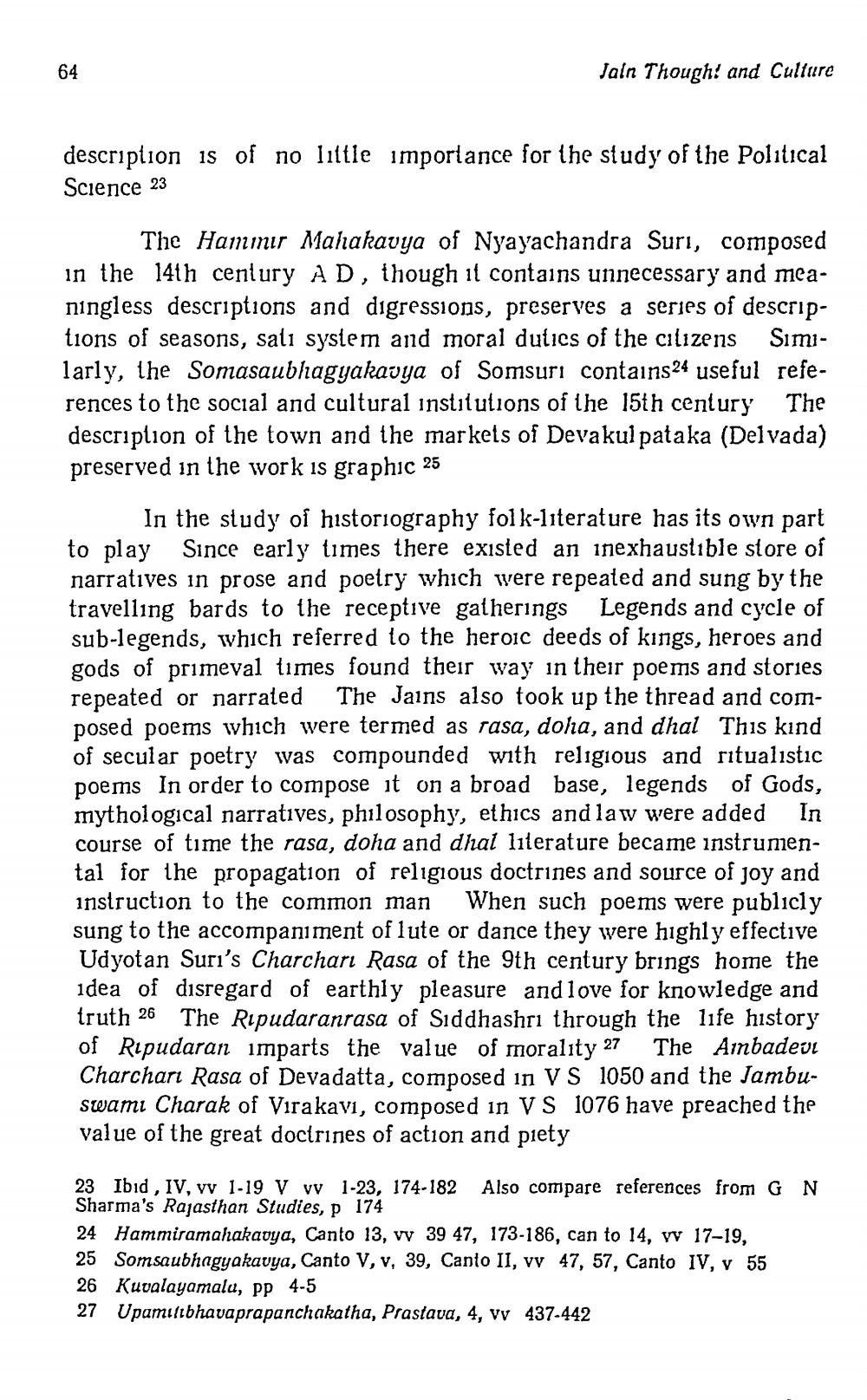________________
64
Jain Thought and Culture
description is of no little importance for the study of the Political Science 23
The Hammır Mahakavya of Nyayachandra Suri, composed in the 14th century AD, though it contains unnecessary and meaningless descriptions and digressions, preserves a series of descriptions of seasons, sali system and moral duties of the cılızens Similarly, the Somasaubhagyakavya of Somsuri contains24 useful references to the social and cultural institutions of the 15th century The description of the town and the markets of Devakul pataka (Delvada) preserved in the work is graphic 25
In the study of historiography folk-literature has its own part to play Since early times there existed an inexhaustible store of narratives in prose and poetry which were repeated and sung by the travelling bards to the receptive gatherings Legends and cycle of sub-legends, which referred to the heroic deeds of kings, heroes and gods of primeval times found their way in their poems and stories repeated or narrated The Jains also took up the thread and composed poems which were termed as rasa, doha, and dhal This kind of secular poetry was compounded with religious and ritualistic poems in order to compose it on a broad base, legends of Gods, mythological narratives, philosophy, ethics and law were added In course of time the rasa, doha and dhal literature became instrumental for the propagation of religious doctrines and source of joy and instruction to the common man When such poems were publicly sung to the accompaniment of lute or dance they were highly effective Udyotan Suri's Charcharı Rasa of the 9th century brings home the idea of disregard of earthly pleasure and love for knowledge and truth 26 The Ripudaranrasa of Siddhashri through the life history of Ripudaran imparts the value of morality 27 The Ambadevi Charchari Rasa of Devadatta, composed in VS 1050 and the Jambuswami Charak of Virakavi, composed in VS 1076 have preached the value of the great doctrines of action and piety
N
23 Ibid , IV, vv 1-19 V vv 1-23, 174-182 Also compare references from G Sharma's Rajasthan Studies, p 174 24 Hammiramahakavya, Canto 13, v 39 47, 173-186, can to 14, v 17-19, 25 Somsaubhagyakavya, Canto V, v, 39, Canto II, vv 47, 57, Canto IV, v 55 26 Kuvalayamala, pp 4-5 27 Upamutbhavaprapanchakatha, Prastava, 4, vv 437-442




